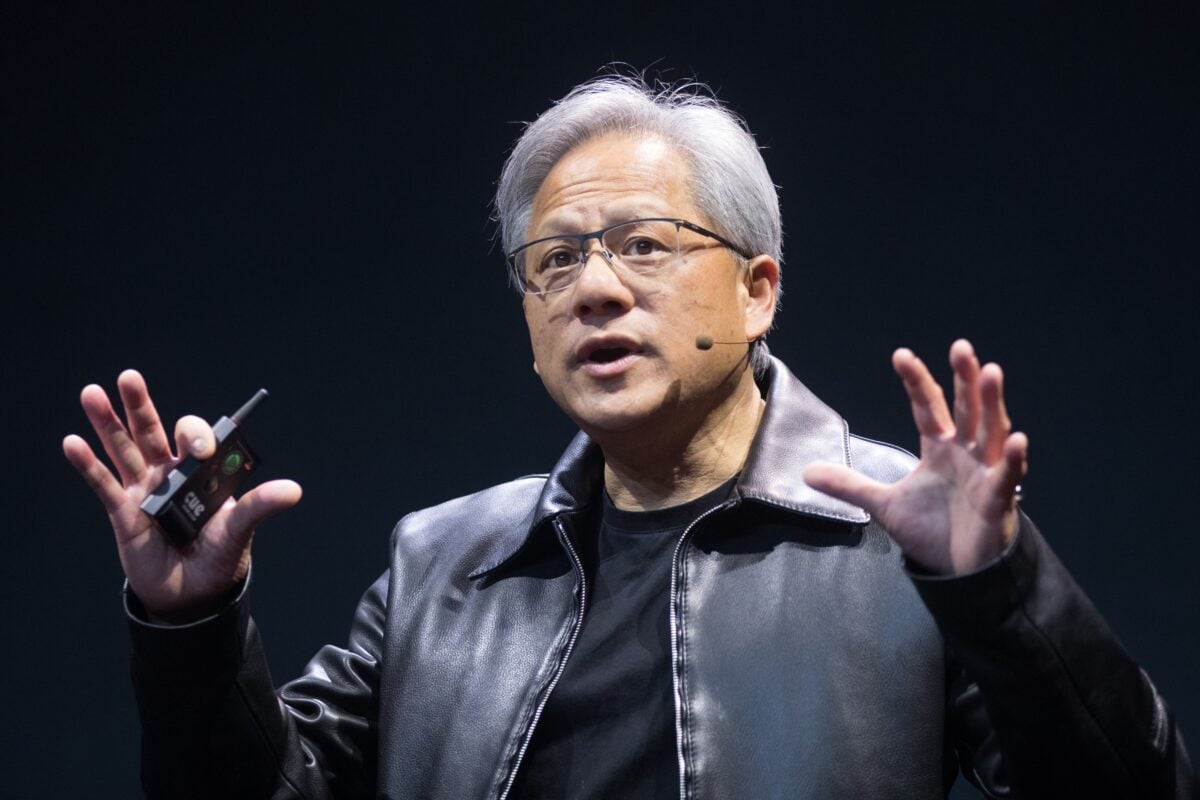TLDRs;
Contents
- Nvidia launches Jetson AGX Thor, a robotics chip with 7.5x faster performance and 128GB memory for AI-driven robots.
- Bulk orders for the Blackwell-based module are priced at $2,999, targeting large-scale robotics developers and manufacturers.
- Nvidia’s automotive and robotics unit saw a 72% revenue jump, though robotics remains just 1% of its overall business.
- CEO Jensen Huang sees robotics as Nvidia’s second-largest growth market after AI, with long-term potential across industries.
Nvidia has unveiled its latest step into robotics with the launch of the Jetson AGX Thor, a powerful chip module based on its cutting-edge Blackwell GPU architecture.
The module, priced at $3,499 for a developer kit, is designed to accelerate artificial intelligence (AI) applications in robotics, autonomous vehicles, and industrial automation. Bulk orders exceeding 1,000 units will be available at $2,999 per module, reflecting Nvidia’s efforts to make advanced robotics hardware more accessible to developers and enterprises.
According to the company, Jetson AGX Thor is 7.5 times faster than its predecessor and comes equipped with 128GB of memory, enabling it to run large AI models capable of interpreting real-world environments in real time. This makes it particularly suited for robotics firms that rely on advanced machine vision, natural language processing, and autonomous decision-making.
Partnerships Signal Real-World Adoption
Nvidia emphasized that leading companies, including Amazon, Agility Robotics, Meta, and Boston Dynamics, are already leveraging its Jetson line to advance robotics applications.
NVIDIA’s new humanoid robot brain is officially on sale for $3,499.
NVIDIA has announced the general availability of the Jetson AGX Thor developer kit and production modules.
Powered by an NVIDIA Blackwell GPU and featuring 128GB of memory, it delivers up to 2,070 FP4 teraflops… pic.twitter.com/9ChZKjsZPG
— The Humanoid Hub (@TheHumanoidHub) August 25, 2025
From humanoid robots to warehouse automation systems, Jetson chips are playing an increasingly critical role in bridging AI capabilities with robotics hardware.
The company has also restructured its business divisions, combining its automotive and robotics units into a single segment. Together, this division saw a 72% year-over-year sales increase in May, generating $567 million quarterly, though robotics still accounts for only around 1% of Nvidia’s overall revenue.
Strategy Mirrors Nvidia’s AI Playbook
Industry watchers note that Nvidia’s move mirrors its historical playbook of adapting successful chip architectures for new industries. Just as the company extended its early programmable GPUs into scientific computing and later machine learning, Nvidia is now adapting its Blackwell-based GPU technology for robotics.
Rather than designing entirely new architectures, Nvidia is repurposing proven GPU technology to serve robotics-specific needs. The Jetson AGX Thor’s large memory pool and AI optimization are tailored for next-generation robots, which increasingly demand the same computational intensity as AI models running in the cloud.
The strategy is consistent with CEO Jensen Huang’s vision, shared at Nvidia’s annual shareholder meeting in June, where he identified robotics as the company’s second-largest growth market after AI. Huang predicted Nvidia technology would eventually power billions of robots, autonomous vehicles, and robotic factories worldwide, cementing its role as the backbone of the AI-driven industrial revolution.
Growth Potential in Robotics Market
While robotics currently represents a small fraction of Nvidia’s revenue, analysts see massive long-term potential. The AI robotics market is projected to grow from $15.2 billion in 2023 to $111.9 billion by 2033, at a compound annual growth rate of over 22%.
Nvidia’s strategy extends beyond hardware. By offering software platforms, cloud services, and AI ecosystems, it aims to replicate in robotics the dominance it has already achieved in AI infrastructure, where it commands nearly 90% market share.


